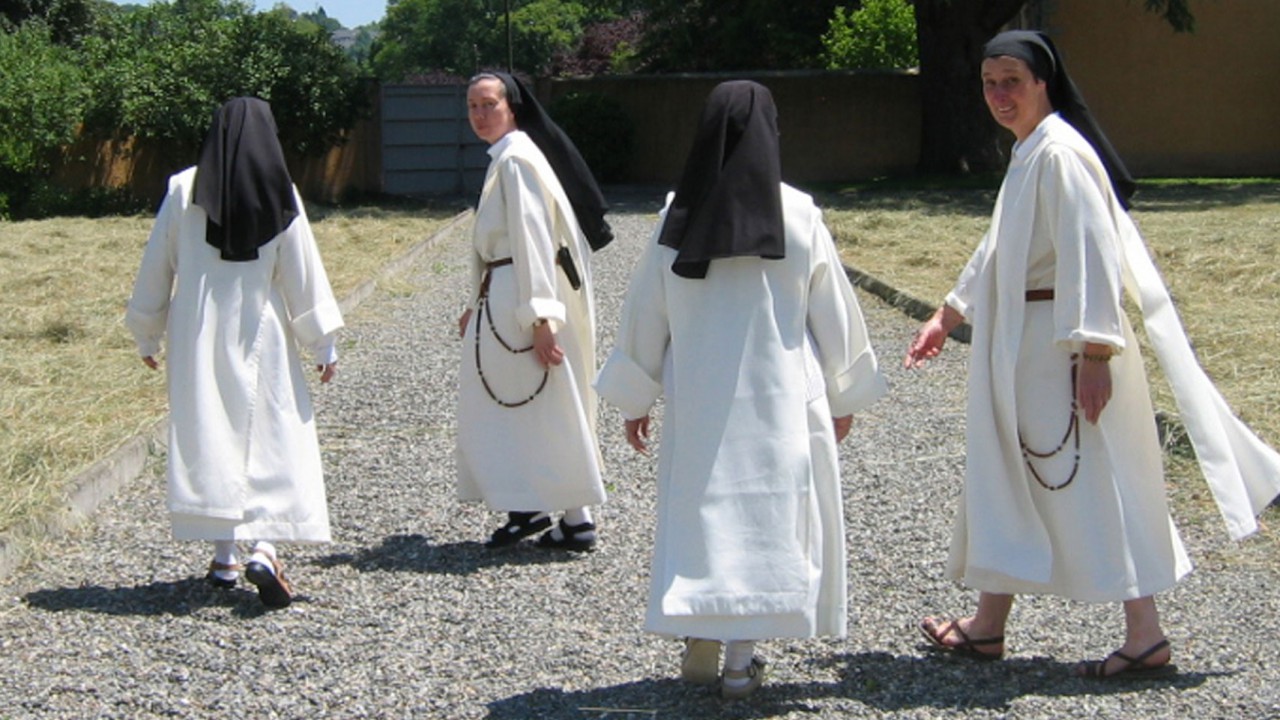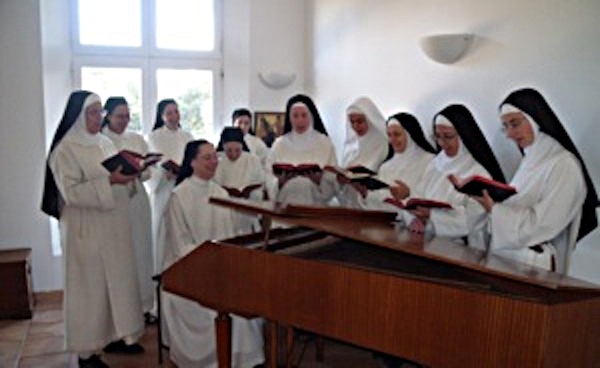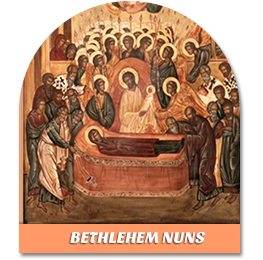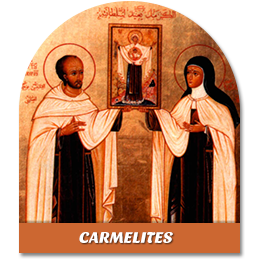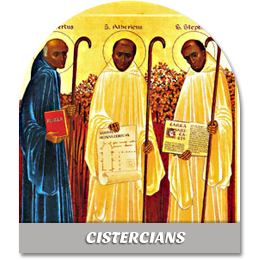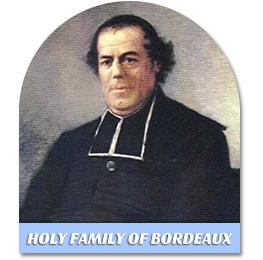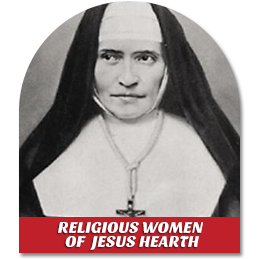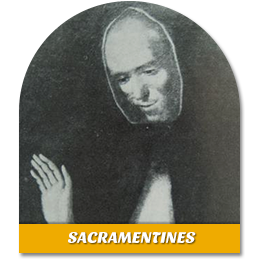
As soon as in the year 1206 or 1207, Dominic gathered in Prouilhe (Aude) a small community of cathar women he converted to catholic faith. The purpose was to support by prayer and penance a mission of evangelization launched by the bishop Diego of Osma in Languedoc. When in the year 1215 the Order of the Preachers was originated officially, this community became an integrant part of it.
“In silence and stillness they earnestly seek the face of the Lord and never cease making intercession with the God of our salvation that all men and women might be saved”
Book of Constitutions of the nuns of the Order of Preachers, Chapter II , 4.
This order to be makes the proposal of a double predication : the predication of brethren who announce explicit the Good News of Jesus-Christ and the predication of the sisters who pray in the secret so that the Word runs his race. Together they “press onward to that perfect love of God and neighbour which is effective in caring for and obtaining the salvation of all people” (fundamental Constitution of the nuns, II).
“To preserve the continual remebrance of God”
Book of Constitutions of the nuns of the Order of Preachers, Chapter II.
Marie-Dominique Chenu used to say that there are two doors through which one enters the Order : the call to the contemplative life and the call to the apostolic life. This is true even for the nuns. Some choose the monastery in order to pray always, in search of purity of heart and to focus completely on the mystery of God. As they come to know St. Dominic they in turn discover mercy and intense intercession for God’s beloved people.
Others wish to serve their fellow men and women by leading them to paths of faith. They discover that one of the best means of realizing this ideal is to offer themselves totally through prayer and silence, the father of preachers, and not through any particular work except the “work” of “believing in Him whom the Father has sent.”
“I do not deserve any reward to live in this Order for the reason that I always experienced too much joy in it”
Blessed Reginald of Orleans.
With the help of God monasteries may become places where his Word can resonate more powerfully because it is accepted and welcomed. But monasteries are also places where human suffering, tears, despair are taken in account and sheltered in the inner sanctuary of compassion, that is to say in the heart and the prayer of each sister. For the sanctuary is not only the place and dwelling of God’s glory it is also “the house of prayer for all people” where all the poor may cry and be heard.
“The vocation of the nuns places them at the heart of the Order. Such was the desire of St. Dominic in order to emphasize in a radical way the grace of contemplation, which is the very source of the itinerant apostolic. In solidarity with the mission of their preaching brothers as well as that of the whole Dominican family, the nuns, by their prayer, accompany the Word which does not return to God without accomplishing that for which it was sent. This contemplation takes root both in silence and liturgical prayer, in the day-to-day life lived in common, in meditation, and assiduous study of the word of God” (A. Duval, op).
“The religion of st Dominic is large, full of joy, of fragrance, it is a garden of delights”
Saint Catherina of Siena.
There are 219 dominican monasteries, and 2773 professed Dominican nuns in the world (registration of march 2013). Most of monasteries are located in Spain and in Italy, but the number of nuns in America and in Africa is increasing.
In France there are about 200 nuns, and 12 monasteries.
Eleven of those monasteries are linked together and belong to the Federation of Our Lady of Preachers, as well the monastery of Estavayer-le-Lac in Switzerland and the monastery of Oslo, in Norway. “The role of the federation is to strengthen the links of charity and fraternal solidarity that already unite the monasteries. There is a special focus on the collaboration for the sister’s formation as well as for information, thinking, and help to face new challenges and various problems encountered by monasteries” (Federation Statutes art 2).
Each monastery is safeguarding its own autonomy.
.



